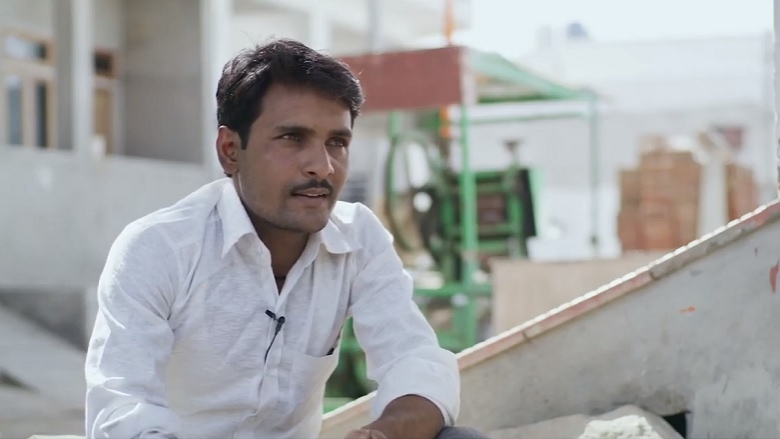Challenge
The rural-urban migration and concentration of industry clusters around the peripheries of urban zones have led to increasing housing shortages — particularly for informal sector workers and households in the economically weaker sections. The market failures emanated from the lack of access to finance related to informal employment, limited savings, uncertain collateral, alternative types of property rights, incomplete housing finance markets, and the related lack of appropriate products. The objective of the World Bank intervention was to push the frontiers of housing finance markets, understand the limits of this expansion, and thereby inform the evolving role of public policy. The LIHF provides strong evidence that income informality tends to constrain access to formal finance more than affordability and that with the right product design, flexibility, and risk mitigation practices, these constraints can be meaningfully addressed.
Approach
The project development objective is to provide access to sustainable housing finance for low-income households to purchase, build, or upgrade their dwellings. Under the LIHF, the National Housing Bank of India extends refinance for housing loans to qualified primary lending institutions, such as banks and housing finance companies, for their sub loans to urban low-income borrowers. The project applies market principles for lending to help develop housing finance markets. While targeted borrowers under the project can have both formal and informal sources of income as well as collateral /primary security, the objective is to test sustainable lending models for informal segments given market failures in access to formal channels for these segments. The project supports upgrading the quality of affordable housing by applying safeguard measures, which helps improve human development outcomes.
Results
The project has crucially contributed to i) deepening inclusion and improved affordability of informal sector households; ii) establishing the sustainability of market finance approaches for low-income borrowers to access long-term housing finance; and, iii) establishing a strong economic case for replication and scaling up. To foster market development, the LIHF has supported innovations in underwriting and monitoring methods drawing on data analytics, expert systems, and use of alternate metrics (as compared to traditional predictors of default behavior that would have constrained financing for informal households).
To date, the project has reached more than 15,000 low-income households across 17 states in India through 17 primary lending institutions, including lenders serving households headed by women. These informal sector beneficiaries were able to access formal housing finance loans at fully market-based rates. This successful innovation has given retail lenders much more confidence to finance housing against informal incomes, and these lenders have continued offering their products to informal beneficiaries even outside the scope of the World Bank loan.
Bank Group Contribution
The last of International Development Agency credit lines for the financial sector in India (SDR66.1m / US$100m.), the LIHF refinancing line with the National Housing Bank (NHB) focused on economically weaker sections of the population (those with annual income less than US$4,500). Notably, the LIHF used market principles to spur housing finance development, catalyzing private financing, and making it Maximizing Finance for Development operation at the core. The World Bank funding enabled, for the first time, refinancing by the National Housing Bank of retail loans against informal incomes and alternate security, helping create a formal longer-term debt financing window for retail lenders.
Partners
The National Housing Bank of India was the primary counterpart of the project. Under the LIHF, it extends refinance for housing loans to qualified primary lending institutions, such as banks and housing finance companies, for their sub loans to urban low-income borrowers.
Beneficiaries
Jagdish, Jaipur (Rajasthan, India)
April 19, 2017 was a memorable day for Jagdish Prasad, a self-employed, 38-year-old truck mechanic from Jaipur. On that day he became the proud homeowner of a two-bedroom house in the Gautam Vihar neighborhood on the Ajmer-Jaipur Highway. This transaction was largely enabled by an INR 7 lakh (US$10,300) loan from Au Housing Finance and INR 8 lakh (US$11,800) in proceeds from the sale of a piece of land in his village. He knows the new house will allow for a secure future in the city for his school-age children and widowed mother.
He received his first loan of INR 4 lakhs (US$5,900) and within six months requested a second top-up loan of INR 3 lakhs (US$4,400). Given the low loan-to-value ratio of 25 percent and on-time payments, the second loan was processed in five working days. Today, Jagdish pays an equated monthly installment of less than INR12,000 (US$176) on an average 16-percent interest rate. “In less than 10 years, I will pay my loan off including principal,” he explains. In the future, Jagdish plans to invest the savings in his children’s education and growing his business. Jagdish owns a motor-parts repair shop and earns less than INR 25,000 (US$368) per month.
